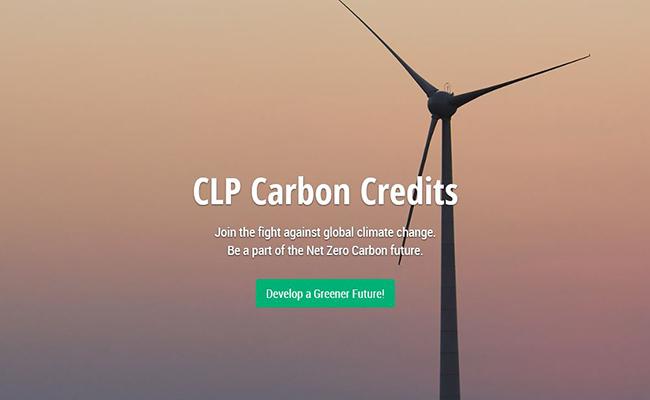Fight Climate Change Today with Carbon Credits and Offsets

Each year, it becomes increasingly clear that climate change is much less something that might happen and more a reality we will all have to live with. Even the haziest recollection of recent weather provides a strong anecdote. While 2017 was among the three warmest years on world record, we have already seen powerful storms, heavy snowfall, heatwaves, and intense rainfall in some regions since the beginning of this year.
Although the UN climate change conference COP23 in Bonn advanced the discussion on implementation guidelines of the Paris Agreement, much work still needs to be done and there remains a call for faster and more ambitious actions from everyone around the globe.
Three steps towards net zero carbon
According to the International Energy Agency's data, the electricity and heat generation sector is responsible for 42% of the global carbon dioxide emissions in 2015. The CLP Group recognises its responsibility to contribute its part in managing and mitigating its emissions and has therefore laid out its carbon intensity reductions through its Climate Vision 2050, issued in 2007.
Meanwhile, some of CLP's customers have also started to take part in reducing their collective carbon footprint by:
- Reducing the use of energy as much as practical;
- Substituting carbon intensive energy with low-carbon or non-carbon emitting energy as much as possible; and
- Offsetting the unavoidable or remaining carbon emissions by purchasing carbon credits generated by carbon reduction projects.
Within the past decade, CLP has already been providing services to support its customers and the community in all three areas. With the ongoing advances in technology and low-carbon practices, CLP sees opportunities to develop even more new products or services in these areas, such as carbon offsets.
Why buy voluntary carbon credits?
Any individual, company or organisation can do their part by taking action in as many of the three areas mentioned as is possible. However, quite often many stop short of the last step of using carbon offsets, with the rationale that paying for the offsets is "buying the licence to pollute", when in fact it is a way to recognise and introduce an accounting method to internalise the impact of carbon that our actions, products and services may have on the environment. Of course, how much the price should be to truly reflect its impact is a more complicated debate, but incorporating carbon offsets into your range of acceptable carbon reduction solutions can allow you the flexibility of using the most cost-effective combination of measures, while pursuing the objective of net zero carbon. Today, an increasing number of organisations and companies are pledging to reach carbon neutrality as part of their endeavours to provide carbon neutral products to a growing group of customers. In some cases, companies are more fundamentally transitioning to new business models, which are focused on low carbon intensity businesses.
CLP launches an online carbon credit sales platform
CLP has launched a new carbon credits e-commerce platform, through which customers located anywhere in the world can calculate their carbon emissions, purchase carbon credits online from CLP and obtain an e-certificate in recognition of their move. These carbon credits represent the emissions avoided by generating electricity from CLP India's wind farms. The avoided emissions can be allocated to any individual or business through the purchase of a carbon credit and CLP completing a voluntary retirement of that credit on their behalf.
To keep up with industry trends, please subscribe to receive New Horizons articles.

